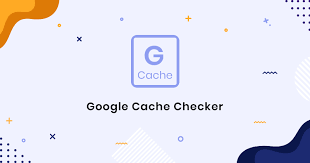A Google Cache Checker is a tool that allows you to view the cached versions of your web pages, providing insights into how Google perceives your site at any given moment. In this article, we will explore what Google caching is, why it matters, how to use a Google Cache Checker, and the benefits of monitoring your cached pages.
What is Google Caching?
Google caching refers to the process where Google temporarily stores copies of web pages to quickly deliver them to users when they perform searches. When you visit a website, Google doesn’t always fetch the live version from the server. Instead, it may deliver a cached version of the page, which is often faster and helps improve user experience.
The Importance of Google Caching
Caching serves several important purposes:
- Speed: Cached pages load faster since they are stored on Google’s servers. This is crucial for user experience and can impact your site’s bounce rate.
- Resource Efficiency: Caching reduces the load on web servers, as Google doesn’t need to request the live page every time someone searches for it.
- Search Performance: Having a cached version can improve your site’s search performance, especially if the live version is slow or temporarily unavailable.
- Backup: Cached versions can serve as a backup if your website goes down or if changes are made that negatively affect user experience.
What is a Google Cache Checker?
A Google Cache Checker is a tool that allows website owners, developers, and digital marketers to see what Google has cached for a specific webpage. This tool shows the last cached version of a page, allowing you to compare it with the current version.
Types of Google Cache Checkers
- Online Tools: Websites specifically designed to check the cached versions of pages. These tools typically require you to enter a URL.
- Browser Extensions: Some browser add-ons allow you to check the cache status directly from your browser.
- Google’s Own Features: You can also use specific search operators in Google to check cached pages.
How to Use a Google Cache Checker
Using a Google Cache Checker is straightforward. Here’s a step-by-step guide to get you started:
Step 1: Choose Your Tool
Select a Google Cache Checker that fits your needs. Popular options include:
- Cached Pages: A simple tool where you can enter your URL and see the cached version.
- Wayback Machine: Although primarily for archival purposes, it can show you various cached versions over time.
- Google Search: You can directly search in Google to view cached pages using the “cache:” operator.
Step 2: Enter Your URL
Once you’ve chosen a tool, input the URL of the page you want to check. For example, if you want to check the homepage of your website, enter the full URL (e.g., https://www.yoursite.com).
Step 3: View the Results
After entering the URL, the tool will display the cached version of the page along with the date it was last cached. Pay attention to any discrepancies between the cached version and the live page.
Step 4: Analyze the Cached Content
Review the cached content to identify any differences. Check for changes in layout, images, or text. This can be especially useful if you’ve made recent updates to your site and want to ensure that they are being reflected correctly.
Step 5: Take Action if Necessary
If you notice that the cached version does not accurately reflect the current state of your page, consider the following actions:
- Refresh Your Cache: You can request Google to recrawl your page using Google Search Console.
- Address Technical Issues: If the cached version is outdated, it may indicate a problem with how Google is crawling your site.
- Monitor Regularly: Regular checks can help you stay on top of any caching issues that may arise.
Common Caching Issues
Despite the benefits of caching, various issues can arise that may affect your website’s performance:
- Outdated Content: If Google hasn’t recrawled your page in a while, users may see outdated content.
- Inconsistent User Experience: If cached and live versions differ significantly, it can lead to confusion and frustration for users.
- Technical Errors: Issues with your server or configurations can prevent Google from caching your pages effectively.
Benefits of Regularly Checking Your Cache
Regularly checking your website’s cached versions offers several advantages:
- Ensure Content Accuracy: Keeping track of what Google has cached helps ensure your users see the most accurate and relevant information.
- Improve SEO: By identifying and addressing caching issues, you can enhance your site’s search engine optimization efforts.
- Monitor Changes: If you frequently update your content, regular cache checks can help confirm that Google is reflecting those changes accurately.
- User Experience: Providing users with consistent and accurate content improves their experience and encourages repeat visits.
Best Practices for Managing Google Cache
To maximize the benefits of caching, consider these best practices:
- Optimize Your Site for Speed: Ensure your website loads quickly to improve the likelihood of being cached more frequently.
- Use Google Search Console: Regularly monitor your site’s indexing and caching status through Google Search Console.
- Implement Clear Caching Policies: If you have a dynamic site, set clear caching policies to help Google understand how often to recrawl your pages.
- Regular Content Updates: Frequently update your content to encourage Google to recrawl and cache your pages more often.
Conclusion
A Google Cache Checker is an invaluable tool for website owners and digital marketers looking to enhance their online presence. By understanding how caching works and regularly checking your cached pages, you can ensure that your website is performing optimally and providing accurate content to users. Whether you use an online tool, browser extension, or Google’s search features, monitoring your cached pages is a crucial step in maintaining your site’s visibility and effectiveness.
